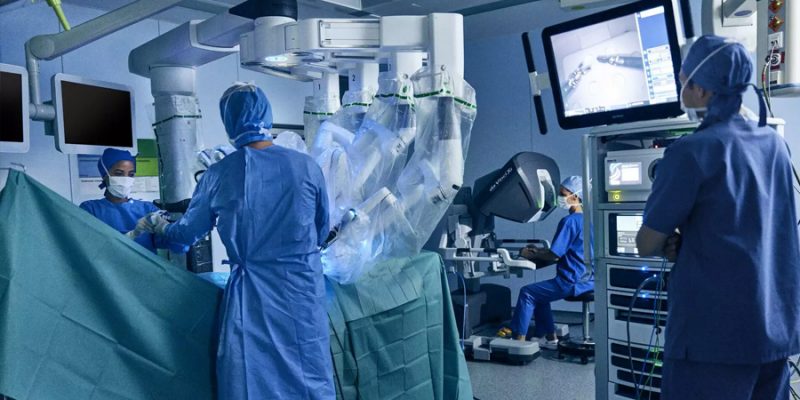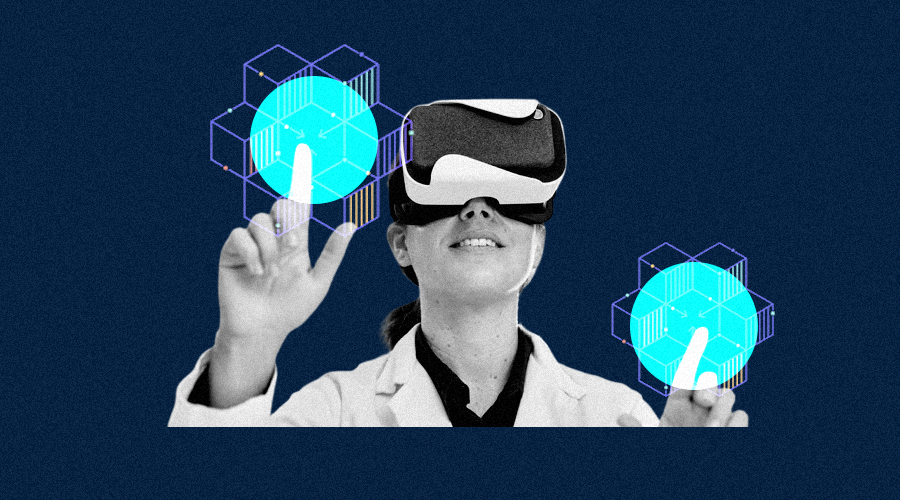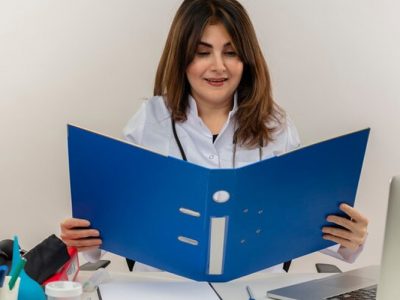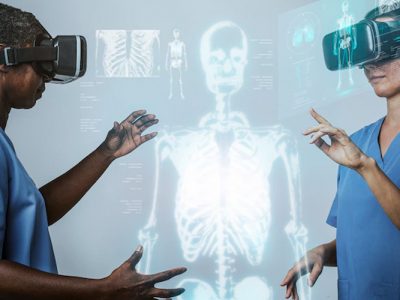
Effective use of robotics in training surgeons is expected to grow more in the coming years for efficient operating on patients.
According to research by Meritt Hawkins, it was found that 52% of orthopaedic surgeons and 48% of general surgeons aged 55 and older. As the surgeons approach the retirement age, there is a need to upskill and train the next generation of surgeons. Surgical robots play an important role in upskilling and training future doctors with advanced AI and robotics. Robots help newcomers to understand the technological advancement like providing visibility inside the human body, teaching them about operating toolsby providing greater exposure so that they can immediately join the industry. Robots often act as surgeons supporting hands during surgeries. Robotics act as an alternative to traditional surgeries that uses large incisions.
Da Vinci Robotic System
The Da Vinci Robotic system provides surgeons with certain robotic-assisted instruments to perform complex surgeries. The Da Vinci Robotics System corresponds to the surgeon’s hand movements like bending and rotating the instrument while operating. This tiny instrument looks like a human hand which provide 3D visuals and a 360-degree range of motion of the operating area so that surgeons can see tiny little blood vessels and get to them before they bleed and control all the instruments of the arm while sitting next to the patients. The instrument’s size allows surgeons to operate through small incisions. As a result, doctors can carry out more precise operations than ever before.
Apart from using robotics in surgeries, they also provide extensive training and education to surgeons, operating room staff and the healthcare team. They teach newcomers to work will the latest technologies and robotics so that after they graduate, they are ready to join the industry immediately.
A lot of the healthcare sector is working to analyse and automate the training process using modern robotic surgical tools. The main goal is to reduce the risk of operation, to create an objective, standardized method of surgical training and save the time and cost of having experienced surgeons in the training loop.
Surgical skills are divided into two parts- theoretical skills and practical skills. Theoretical skills are about having theoretical and decision-making knowledge about the subject by clearing medical exams like MCAT, MBBS etc while practical skill is about carrying out manual tasks.
In the year 1889, Sir William Halsted showed surgical training a new path by creating an apprentice-style method. According to this, students would ‘see one, do one, teach one.’ i.e., after minimum exposure and completion of the produce, a student will have to master the skill and should be capable of teaching the next generation. Although many talented surgeons are skilled in the traditional way which is much more time-consuming. With the advent of robotics and technologies in healthcare, researchers are now able to analyse surgical motion and evaluate surgical skills.
A group of Johns Hopkins University is researching human-machine interaction for surgical training and assistance for effective performance in complex surgeries. They divided the process of introduction into three parts- first, involves systems to understand what the human and environment are doing; second, using machines to assist human operators through augmentation and third to have a robot perform the task autonomously.
Google in 2015 announced its partnership with the pharma giant Johnson & Johnson for developing surgical robots. These robots were later used in 2018 to operate on some synthetic tissue. I&I brought Auris for the development of robots aiming at lung cancer. Such robots not only helped in healthcare but were also used to teach students for greater exposure.
UPMC Centre for Advanced Robotics Training
The renowned UPMC centre for advanced robotics training (CART) provides mentorship to surgeons willing to enhance their skills in robotic surgery. Various training programs offered by them are ENT surgery, surgical oncology and optimized robotic surgery programs. They provide new surgeons with all the resources. They engage in conferences all around the world, extensive use of robotic systems and implement robotic surgery programs. CART encourages participants with directions to start robotic surgery programs in their hospitals. CART provides proper practical knowledge, support high quality, affordable programmes for participating surgeons and their teams.
UPMC is one of the US’s largest centres for robotic surgery assistance. They have performed over 6000 robotic surgeries across various hospitals. They often engage in peer-reviewed research, training models and internal development of quality metrics with surgeons contributing to optimizing robotic surgery techniques. UPMC training programs include ear, nose and throat (ENT) surgery, surgical oncology and thoracic surgery.
Some of the famous robotic surgery training centres available in India are the International Institute of Laparoscopic and Robotic Surgery, Narayana Health, Institute of Medical and Minimal Access Surgery Training (IMMAST) etc. International Institute of Laparoscopic and Robotic Surgery famous for Laparoscopic survey provides trainees with hands-on experience aimed at providing theoretical and practical knowledge on robotic surgeries and developing a sense of empowerment. Narayana Health has launched their own Institute of Robotic Surgery using Da Vinci Surgical System for prostate, kidney, gynaecologist, head and neck cancer surgeries. IMMAST is famous for its minimal access surgery to ensure safe care with minimum trauma to patients. They also provide trainees with a lot of hands-on experience and training in their desired field.



















